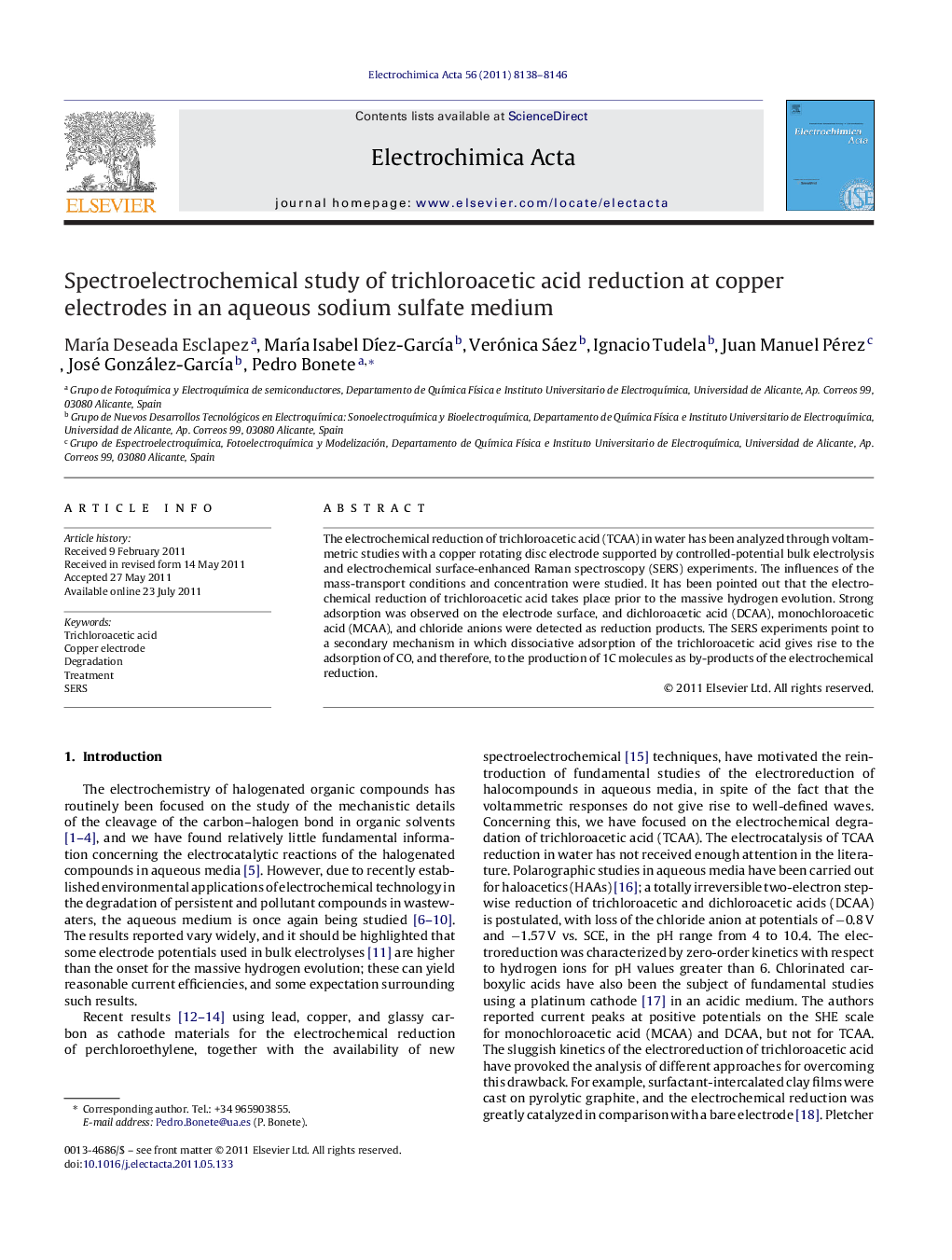| Article ID | Journal | Published Year | Pages | File Type |
|---|---|---|---|---|
| 189180 | Electrochimica Acta | 2011 | 9 Pages |
The electrochemical reduction of trichloroacetic acid (TCAA) in water has been analyzed through voltammetric studies with a copper rotating disc electrode supported by controlled-potential bulk electrolysis and electrochemical surface-enhanced Raman spectroscopy (SERS) experiments. The influences of the mass-transport conditions and concentration were studied. It has been pointed out that the electrochemical reduction of trichloroacetic acid takes place prior to the massive hydrogen evolution. Strong adsorption was observed on the electrode surface, and dichloroacetic acid (DCAA), monochloroacetic acid (MCAA), and chloride anions were detected as reduction products. The SERS experiments point to a secondary mechanism in which dissociative adsorption of the trichloroacetic acid gives rise to the adsorption of CO, and therefore, to the production of 1C molecules as by-products of the electrochemical reduction.
► Copper electrode as trichloroacetic acid reduction electrocatalyst. ► Dichloroacetic acid, monochloroacetic acid and chloride anions as reduction products. ► Low potentials enable dissociative adsorption of the trichloroacetic acid towards the adsorption of CO.
